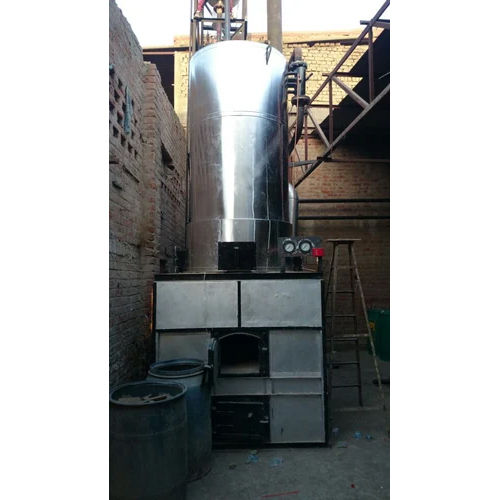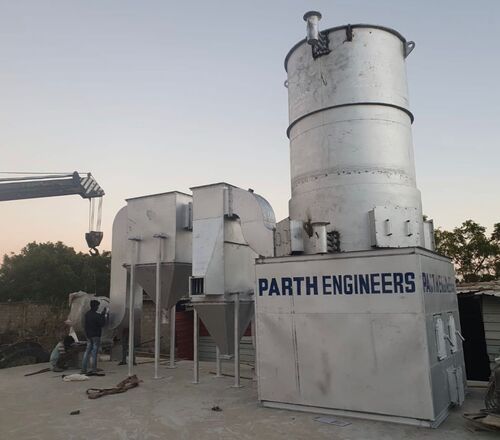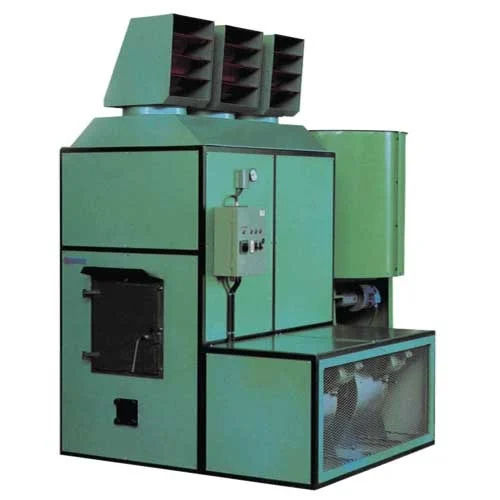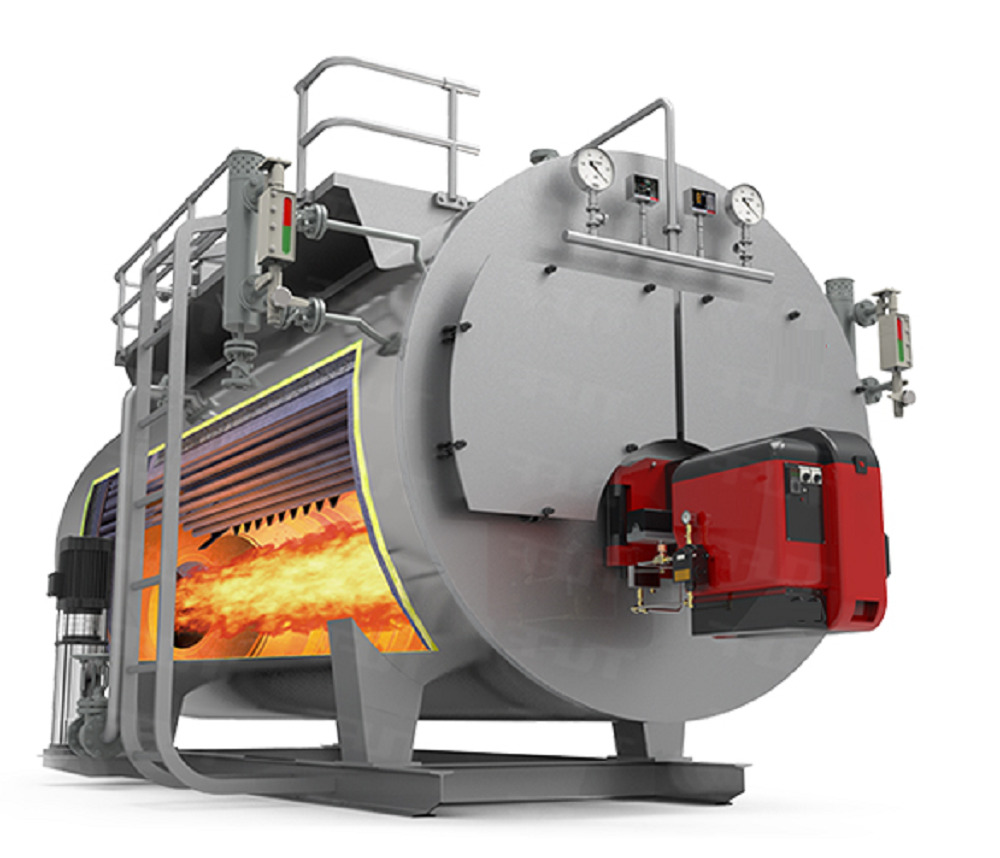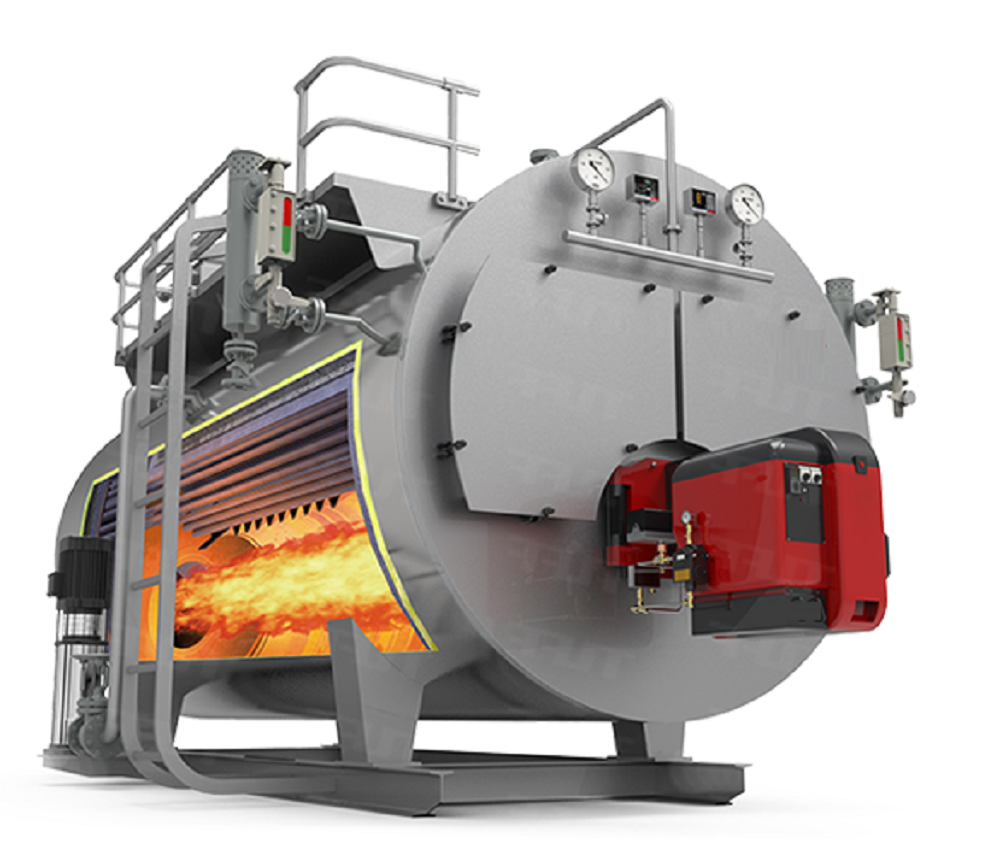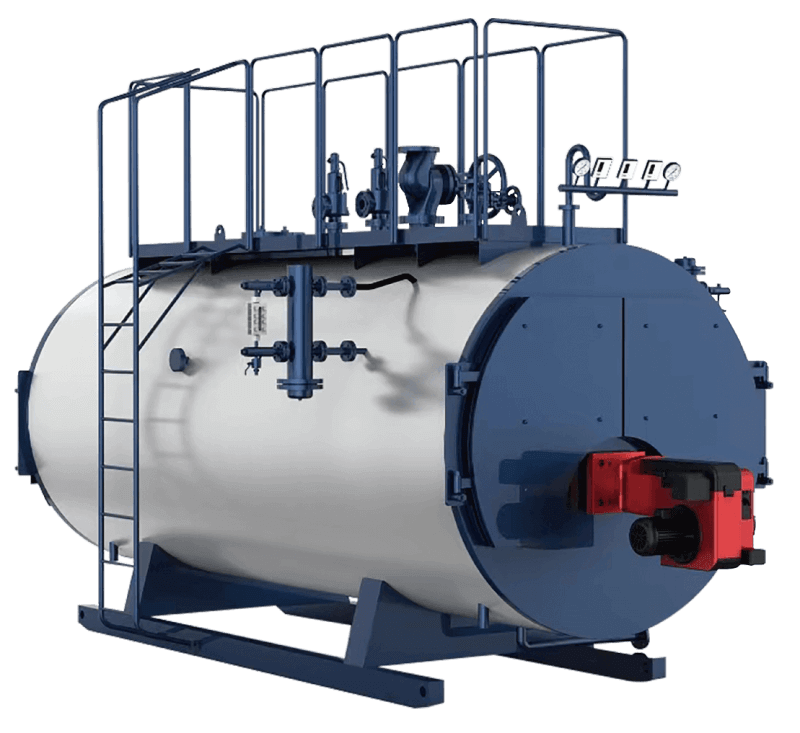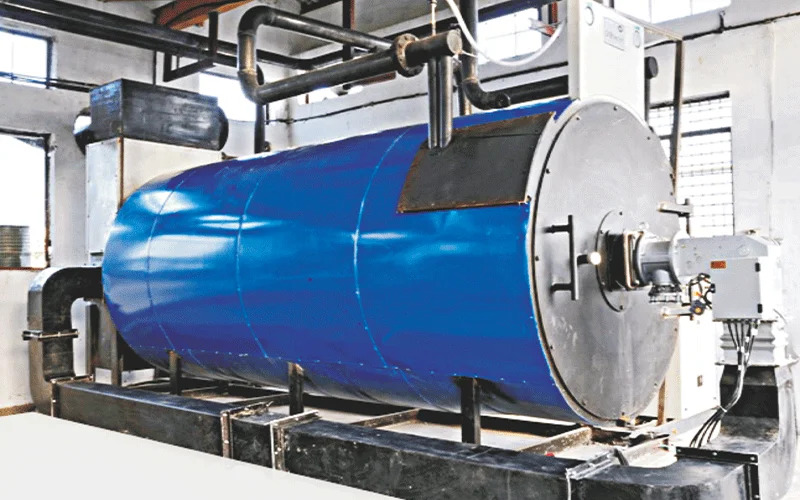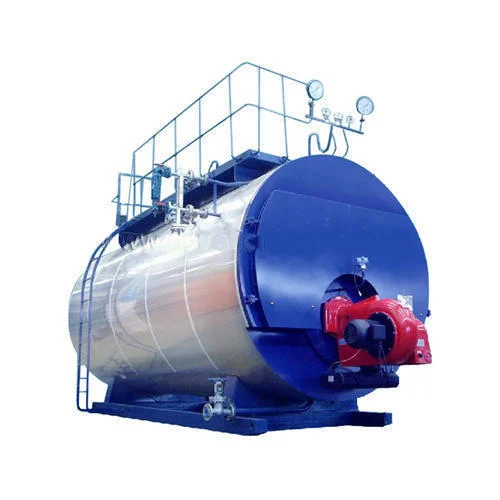|
Steam Boiler
Product Details:
Steam Boiler Price And Quantity
- 100000 INR/Piece
- 1 Piece
Product Description
A Steam Boiler is a pressure vessel that heats water to generate steam for use in various industrial applications, such as heating, power generation, and manufacturing processes. The steam produced can be used to drive turbines, heat buildings, or power different machinery. Boilers are typically fueled by natural gas, coal, oil, or electricity and are designed to operate safely at high pressures and temperatures.
Key Components of a Steam Boiler:
-
Boiler Shell: The outer casing that contains the internal components of the boiler, including the furnace and the water chamber.
-
Furnace: The chamber where fuel is burned to produce heat. The combustion of the fuel generates hot gases that heat the water.
-
Water Chamber: The part of the boiler that holds water. The heat from the furnace raises the water temperature to produce steam.
-
Steam Drum: The upper part of the boiler where steam accumulates. It is connected to the water chamber and serves as the separation point for steam and water.
-
Heat Exchanger: A surface that transfers heat from the combustion gases to the water. It maximizes the heat exchange process to ensure the efficient production of steam.
-
Burner: The device used to introduce fuel and air into the furnace, where combustion occurs to generate heat.
-
Boiler Tubes: Tubes that run through the furnace and water chamber, carrying hot gases or water to help generate steam. These tubes increase the surface area for heat transfer.
-
Feedwater System: The system that supplies water to the boiler, including a pump that delivers water at the required pressure.
-
Steam Separator: A device that ensures the steam is free of water droplets before being delivered to the system.
-
Control Panel: A system used to monitor the temperature, pressure, and water levels, ensuring the safe operation of the boiler.
Working Principle:
-
Fuel Combustion: The burner ignites fuel (gas, oil, or coal) in the furnace, generating heat.
-
Heat Transfer: The hot gases from the combustion process flow through the heat exchanger, transferring their thermal energy to the water in the boiler tubes.
-
Steam Generation: As the water in the boiler absorbs heat, it reaches its boiling point and transforms into steam.
-
Steam Separation: The steam rises to the steam drum, where it is separated from any remaining water. Dry steam is then directed to the system for use.
-
Exhaust Gases: After heat transfer, the combustion gases are exhausted through a flue or stack.
Types of Steam Boilers:
-
Fire-Tube Boiler: In this type, hot gases pass through tubes that are surrounded by water. The heat from the gases transfers to the water, converting it into steam. These are typically used for lower pressure applications.
-
Example: Simple vertical boilers, Lancashire boilers.
-
-
Water-Tube Boiler: Here, water flows through tubes that are heated by combustion gases. This design is more efficient and can handle higher pressures. It is commonly used in power plants.
-
Example: Babcock and Wilcox boiler, Stirling boiler.
-
-
Electric Boiler: Uses electrical heating elements to directly heat water, producing steam. These boilers are compact, clean, and typically used for small-scale applications.
-
Cogeneration Boilers: These systems generate both steam and electricity, typically found in large industrial plants, where heat recovery is necessary for energy efficiency.
Applications of Steam Boilers:
-
Power Generation: Steam turbines in power plants are powered by steam generated from boilers.
-
Industrial Processes: Boilers are used in industries like textiles, chemicals, food processing, and paper for heating, sterilizing, and providing energy for manufacturing.
-
Heating: In residential, commercial, and industrial settings, steam is used for heating buildings, often in systems like radiators.
-
Oil Refineries: Steam boilers are integral in refining processes, including cracking, distillation, and heating.
Advantages of Steam Boilers:
-
High Efficiency: Steam boilers can operate at high efficiencies, especially if designed for specific industrial processes.
-
Versatile Applications: Steam can be used for both heating and mechanical energy generation.
-
Energy Recovery: Modern steam boilers incorporate heat recovery systems, enhancing their overall energy efficiency.
-
Reliability: Steam boilers are well-established technology, making them highly reliable for long-term use.

Price:
- 50
- 100
- 200
- 250
- 500
- 1000+
Other Products in 'Steam Boiler' category
 |
Parth Engineers
All Rights Reserved.(Terms of Use) Developed and Managed by Infocom Network Private Limited. |


